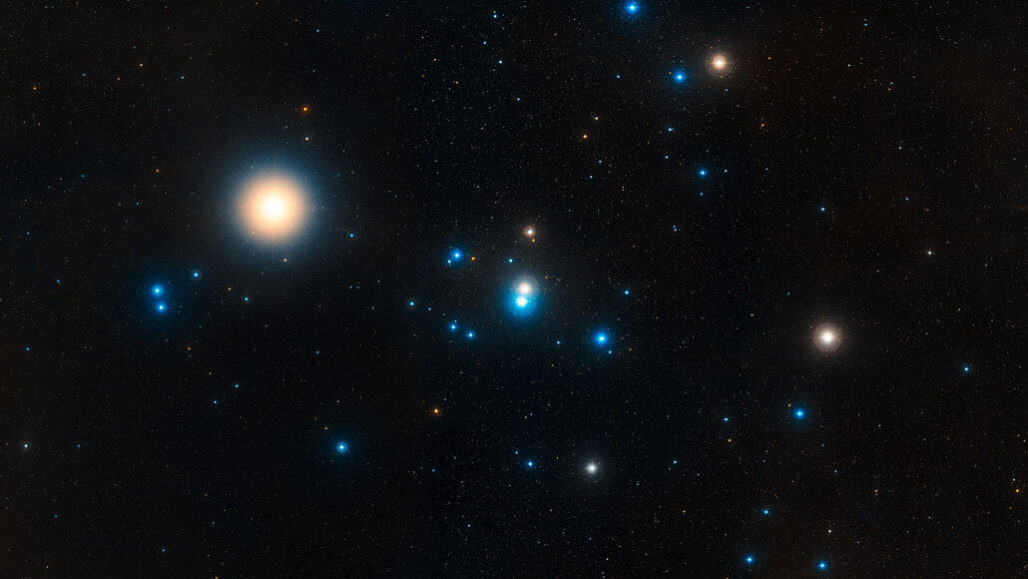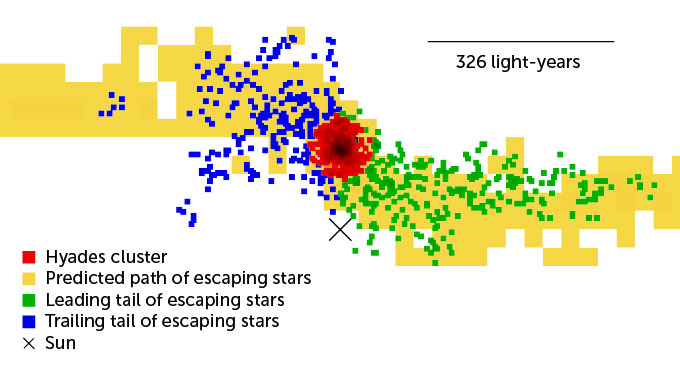The star cluster closest to Earth is in its death throes-Stars in the Hyades are moving so fast it will disintegrate in 30 million years

The closest cluster of stars to Earth is falling apart and will soon die, astronomers say.
Using the Gaia spacecraft to measure velocities of stars in the Hyades cluster and those escaping from it, researchers have predicted the cluster’s demise. “We find that there’s only something like 30 million years left for the cluster to lose its mass completely,” says Semyeong Oh, an astronomer at the University of Cambridge.
“Compared to the Hyades’ age, that’s very short,” she says. The star cluster, just 150 light-years away and visible to the naked eye in the constellation Taurus, formed about 680 million years ago from a large cloud of gas and dust in the Milky Way.
Stellar gatherings such as the Hyades, known as open star clusters, are born with hundreds or thousands of stars that are held close to one another by their mutual gravitational pull. But numerous forces try to tear them apart: Supernova explosions from the most massive stars eject material that had been binding the cluster together; large clouds of gas pass near the cluster and yank stars out of it; the stars themselves interact with one another and jettison the least massive ones; and the gravitational pull of the whole Milky Way galaxy lures stars away too. As a result, open star clusters rarely reach their billionth birthday.
On the move
The Hyades star cluster (indicated in red) had long been predicted to be losing stars in two tails (yellow), but astronomers first spotted the escaping stars only in 2018. Some of the escaping stars (green) lead and other stars (blue) trail the cluster as it revolves around the Milky Way’s center.
The Hyades’ stellar tails

Comments
Post a Comment